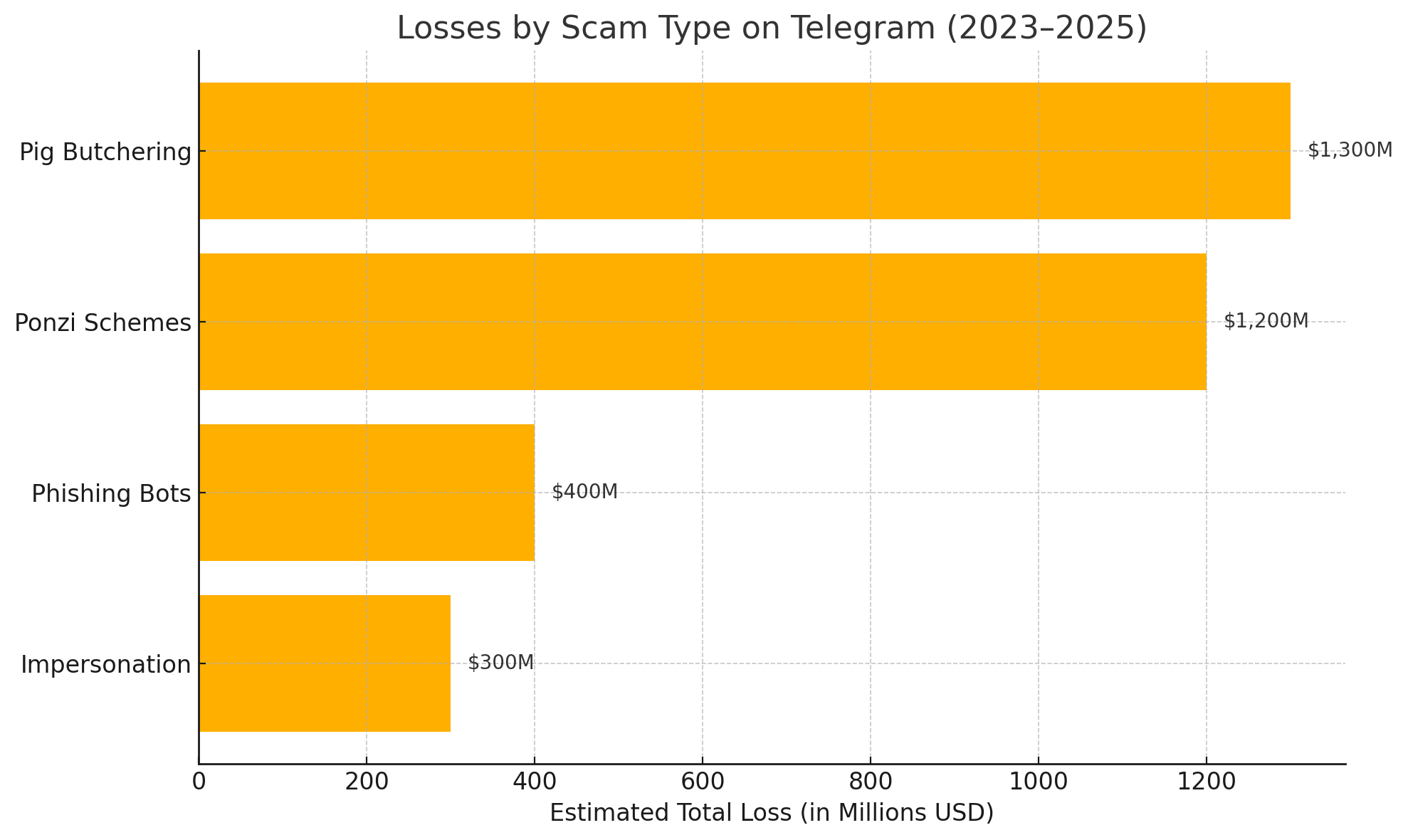In the last two years, Telegram has become ground zero for some of the largest and most damaging cryptocurrency scams in the world. From Ponzi schemes and phishing bots to professional impersonators and organized fraud rings, the platform’s popularity in the crypto world has also made it fertile ground for scammers. With over 800 million users globally and a reputation for privacy and decentralization, Telegram offers an ideal environment for fraudsters to operate under the radar—and often without consequences.
The Rise of Telegram-Fueled Crypto Fraud
Cryptocurrency-related crime hit new highs in recent years, with scams alone accounting for nearly $4 billion in losses in 2023. A significant share of these scams originated or operated on Telegram. The app’s public channels, anonymous user identities, large group capabilities, and programmable bots make it easy for criminals to mimic legitimate services, prey on users, and disappear without a trace.

The Biggest Telegram Crypto Scams (2023–2025)
1. Pig Butchering Investment Scams
One of the most widespread schemes is known as “pig butchering”—a slow-burn scam where fraudsters groom victims over time, often pretending to be romantic interests or old friends, before luring them into a fake crypto investment platform. Victims are added to Telegram groups populated by scam bots posing as successful investors. Once convinced, victims are instructed to deposit crypto into sham platforms. When they try to withdraw, everything vanishes. U.S. authorities have prosecuted rings laundering tens of millions through this method.
2. VidiLook Ponzi Scheme
Touted as a revolutionary platform where users could earn tokens for watching ads, VidiLook attracted thousands through flashy Telegram campaigns. Promises of staking rewards and high returns pulled in global investors—until the project suddenly rug-pulled in 2023. Over $120 million in crypto vanished overnight. Telegram groups used to coordinate the scheme were either abandoned or deleted by the scammers.
3. Chia Tai Tianqing Impersonation Scam
This scam hijacked the name of a reputable pharmaceutical company to appear legitimate. Promoted heavily on Telegram, it promised outsized returns on crypto investments. Like VidiLook, it ran a Ponzi model before disappearing with investor funds. The scheme ranked among the top crypto scams of the year.
4. Operation Firestorm: Binance Impersonators
In 2025, Australian authorities exposed a sophisticated ring that spoofed Binance support messages via SMS and followed up with fake Telegram accounts. Victims, believing their accounts were compromised, were instructed to transfer funds to a “safe” wallet—actually controlled by the fraudsters. Over 130 victims were identified. Telegram enabled direct, anonymous contact between scammers and victims.
5. Phishing Bots and Fake Safeguard Channels
In late 2024, Telegram saw a 2,000% surge in phishing bots posing as wallet verifiers or customer support. These bots mimicked services like Phantom Wallet and tricked users into revealing seed phrases or signing malicious transactions. Telegram’s automation features and lack of app-store-style vetting made these scams especially effective.

Why Telegram Is a Scam Haven
- Anonymity: Telegram requires no verified identity to create an account.
- Groups and Channels: Scammers can broadcast messages to thousands instantly.
- Bot Functionality: Fraudsters use Telegram bots to automate phishing and fake support.
- Lack of Oversight: Telegram doesn’t proactively moderate financial content or verify organizations.
How to Avoid Crypto Scams on Telegram
With billions lost to cryptocurrency scams already, protecting yourself requires vigilance and skepticism. Here’s your essential protection playbook:
🚩 Never share your private key or seed phrase.
Legitimate services will never ask for this.
🔍 Be skeptical of unsolicited messages.
If someone contacts you offering investment advice or support help, ignore or block them unless you can verify their identity.
👀 Verify all sources.
Join official project channels through their verified website links, not forwarded messages or public searches.
🔐 Don’t click suspicious links or interact with unknown bots.
Phishing bots can compromise your wallet or install malware.
🏦 Use read-only or muted settings for large groups.
This reduces your exposure to scam messages.
⚠️ Report suspicious activity.
Use Telegram’s built-in reporting features and notify the relevant crypto project if impersonation is involved.
Final Thoughts
As Telegram becomes more embedded in crypto culture, it’s also become more attractive to cybercriminals. Scams like VidiLook and pig butchering operations show how even tech-savvy investors can be manipulated when the right mix of trust, technology, and deception is involved. While law enforcement is stepping up efforts and platforms like Binance are enhancing user education, the ultimate defense still lies with users themselves.
Stay cautious, stay informed, and treat every message on Telegram with healthy skepticism—especially when money is involved.g a mysterious death, missing funds, and a trail of deception—underscores the dangers of excessive trust in centralized exchanges and individual operators in the crypto space.
Rate the article














